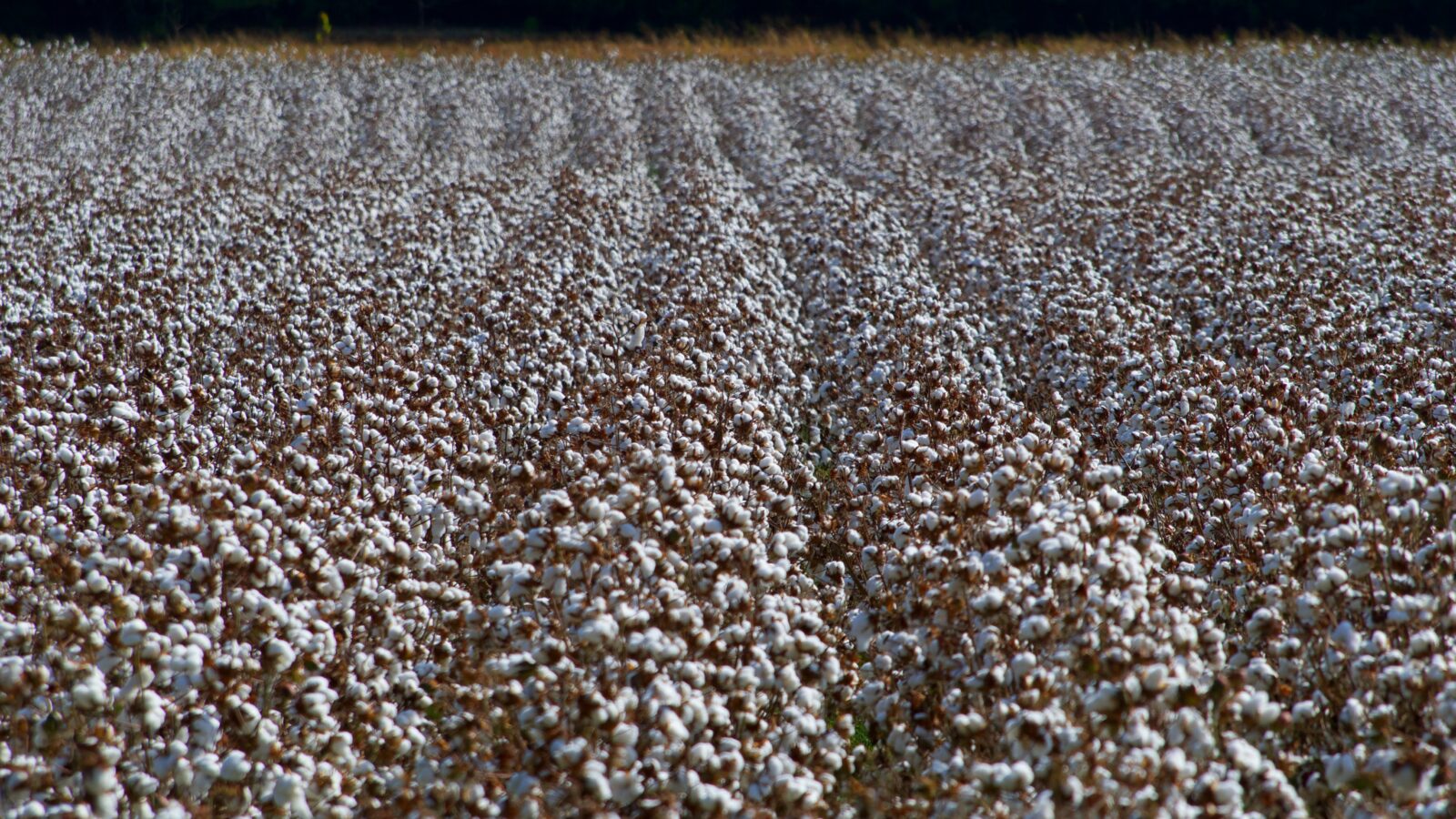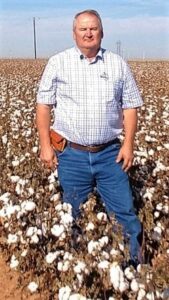
Lloyd Arthur is a fifth-generation cotton farmer living in Ralls, Texas with his wife Angela. They have four children, and together the family has created an award-winning farming operation.
Lloyd has served in numerous leadership roles including the boards of Rio Blanco Soil and Water Conservation District, Cotton Incorporated, and Texas Farm Bureau. He is also a member of the Texas Alliance for Water Conservation, a partnership whose mission it is to conserve water and soil for future generations.
He talks to us about the practices that have enabled him to conserve water on his farm while boosting yields.
 Lloyd, how much land do you own and what do you grow?
Lloyd, how much land do you own and what do you grow?
Our farm is 2,000 acres (810 hectares) and we grow mainly cotton as well as grain sorghum and wheat as a cover crop.
Why is water conservation such an integral part of how you do business?
Our water is limited because we’re in a declining aquifer. We’re farming in what is sometimes a desert, so we’re very conscious of our resources. We try to utilize the water we have more efficiently and be better stewards with it.
What are some of the practices you use to maximize water efficiency? What benefits do they offer over your former irrigation systems?
We use a number of conservation practices and irrigation efficiency technologies, from soil moisture probes to variable rate irrigation, which allows us to control how much water is being applied and ultimately use water more efficiently.
With our old irrigation systems, we would continue watering at the edge of the field, even where there’s no crop growing, which was a waste of our most precious resource.
What are some of the other technologies you use?
We also use an app called FieldNET to monitor our irrigation systems 24/7 via computer and smartphone. If a machine stops or a well goes down, it alerts us and we can go and see what’s wrong in a timely manner. This has shortened our downtime on malfunctioning pivots from hours to minutes.
Before, we’d drive around to check the pivots, and maybe one would go down 15 minutes after we checked it, and it would be hours before we knew there was a problem. Now, we know exactly which machine needs attention and go to it first, so that we can get water flowing to the crop again and stay on schedule.
How important is data in your operation? How does it help?
Data is essential. By using data, we can see what’s working and pinpoint areas for improvement, which enables us to optimize our water usage. For example, by analyzing data from moisture probes, we discovered that slowing down an irrigation pivot is actually the most efficient approach. Data is also a way for us to tell our story downstream to supply chain partners, or even to non-operating landlords who benefit from understanding the numbers behind our conservation decisions.
How do you gather and analyze the data?
We enter the data we collect into the Fieldprint Platform from Field to Market and it produces an analysis which helps us understand opportunities to improve our management practices to save water as well as money.
What are some of the benefits you’ve seen from better water management?
Our productivity has improved substantially. My Dad would be astounded! We have less water, and we’re achieving twice the yields he did on less land!
In a cooperative study with the Texas Alliance for Water Conservation (TAWC), one of our drip fields that had consistently produced two-bale cotton yielded three bales.
On the rest of the farm, I’d estimate we’re getting 50 to 75 pounds (23-34 kgs) of lint extra per acre (ha) because of slower, longer water-application rates.
How will you continue to improve your water management?
It’s an ongoing process. I’m all-too aware that what we’re doing now may not work in 5 years’ time. We have to keep evolving. No two years are alike—all we can do is to keep going back with the data and see what works.


